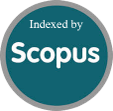Educational expectations to enter the Higher Education of the Entity of Querétaro
DOI:
https://doi.org/10.51798/sijis.v3i2.305Keywords:
educational expectations, high school, higher education, competenciesAbstract
The objective of the research consisted of describing the educational expectations to enter Higher Education (HE) in Querétaro State, based on the reality that applicants have at the time of completing the High School (HS). The objective was fulfilled, since the reality of the HS students is described, which generate expectations towards Higher Education, not only to achieve academic goals, otherwise to develop skills that allow narrowing the gap between the aspiration and the achievement possibility of personal and professional growth to be fulfilled in a job development and an entrepreneurial context. The research design was carried out through a quantitative and descriptive configuration. The population sample consisted of 375 graduates of the HS at the end of the 2020-21 academic year out of a population of 15,465 from the Cities of Querétaro, San Juan Del Río and El Marqués from Querétaro State. The research hypotheses were fulfilled, since 100% of HS students are interested in entering the HE, more than 80% wish to study under a classroom face-to-face modality and more than 20% of the HS students are interested in Bachelor's degrees that include English proficiency. It is concluded that the HS students are more interested in Bachelor's degrees that are related to administration, technology and data management, as well as the main sectors of the region.
References
Aranciba, C., Herrera, P. y Strasser, K. (2013). Manual de Psicología Educacional. Alfaomega.
Blanco, E. E. (2021). Fantasías razonables: las expectativas educativas al final del nivel medio superior en México y su relación con la desigualdad socioeconómica. Sociológica Méx, 36(103), pp. 43-84. Recuperado de http://www.scielo.org.mx/scielo.php?script=sci_arttext&pid=S0187-01732021000200043&lng=es&tlng=es.
Carrazco, S. (2021). La problemática educativa en México: lo que dejó la pandemia por COVID-19. Revista Dilemas Contemporáneos: Educación, Política y Valores. VIII(Edición Especial), pp. 1-19. Recuperado de https://doi.org/10.46377/dilemas.v8i.2775
Espíndola, J. L. (2011). Reingeniería educativa – Enseñar y aprender por competencias. Cengage Learning.
Cisternas, C. (2021). Análisis del entorno en la Gestión Universitaria: Una aproximación desde la Teoría de Sistemas Sociales. Revista Actualidades Investigativas en Educación, 21(1), pp. 1-22. Recuperado de https://www.scielo.sa.cr/pdf/aie/v21n1/1409-4703-aie-21-01-457.pdf
Díaz, F. y Hernández, G. (2010). Estrategias docentes para un entorno significativo – Una interpretación constructivista. McGraw Hill.
Guerra, M. S. (2013). La tecnología y la educación personalizada. Alfaomega.
Hernández, O. E. y Padilla, L. E. (2019). Expectativas de los estudiantes hacia la educación superior: influencia de variables familiares, personales y escolares [PDF]. Sociológica 34(98), pp. 221-251. Recuperado de http://www.sociologicamexico.azc.uam.mx/index.php/Sociologica/article/download/1546/1448/
Hernández-Sampieri y Mendoza, C. (2018). Metodología de la investigación. McGraw Hill.
Lamb, C., Hair, J. and McDaniel, C. (2019). Marketing. Cengage.
INEGI. (2021). Panorama sociodemográfico de México 2020 – Querétaro [PDF]. INEGI Censo de Población y Vivienda 2020. Recuperado de: https://www.inegi.org.mx/contenidos/productos/prod_serv/contenidos/espanol/bvinegi/productos/nueva_estruc/702825197957.pdf
INEGI-DENUE. (2021). Actualización del Directorio Estadístico Nacional de Unidades Económicas Interactivo 05/2021 [PDF]. Comunicado de Prensa Núm. 321/2. Recuperado de: https://www.uv.mx/fca/files/2021/05/DENUE2021_05-1.pdf
INEGI-DENUE. (2021). Directorio Estadístico Nacional de Unidades Económicas - Querétaro 05/2021 [Tabla]. INEGI. Recuperado de: https://www.inegi.org.mx/contenidos/masiva/denue/denue_22_csv.zip
INEGI-ITAEE. (2021). Indicador trimestral de la Actividad Económica Estatal durante el cuarto trimestre de 2020 [PDF]. Comunicado de Prensa Núm. 226/21. Recuperado de: https://www.inegi.org.mx/contenidos/saladeprensa/boletines/2021/itaee/itaee2021_04.pdf
López, E., Martínez, J. E. y Ponce, S. (2020). Tendencias globales de la educación superior en el contexto mexicano. Revista Cubana de Educación Superior, 39(1). Recuperado en 08 de abril de 2022, de http://scielo.sld.cu/scielo.php?script=sci_arttext&pid=S0257-43142020000100010&lng=es&tlng=es.
Miguel, J. A. (2020). La educación superior en tiempos de pandemia: una visión desde dentro del proceso formativo [PDF]. Revista Latinoamericana de Estudios Educativos (México), L(Esp.-), pp. 13-40. Recuperado de https://rlee.ibero.mx/index.php/rlee/article/view/95/364
Montaudon-Tomas, C., Pinto-López, I. y Yáñez-Moneda, A. (2020). Competencias digitales para las nuevas formas de trabajo: nociones, términos y aplicaciones [PDF]. VinculaTégica EFAN 6(2), pp. 1333-1347. Recuperado de http://www.web.facpya.uanl.mx/vinculategica/Vinculategica6_2/15_Montaudon_Pinto_Ya%C3%B1ez.pdf
Münch, L., Galicia, E., Jiménez, S., Patiño, F. y Pedronni, F. (2013). Administración de instituciones educativas. Trillas.
OCDE. (2019). Estrategia de competencias 2019 de la OCDE - México [PDF]. OCDE. Recuperado de https://www.oecd.org/mexico/Skills-Strategy-Mexico-ES.pdf
Ordorika, I. (2020). Pandemia y educación superior [PDF]. Revista de la Educación Superior 49(194), pp. 1-8.
Salinas, R., Godínez, J. y Ortega, M. (2017). ¿Hacia dónde se dirige el desarrollo industrial de Querétaro? Pasado, presente y ¿futuro? De la industria queretana. En M. A. Carrillo Pacheco (Coordinador), Expresiones del trabajo en Querétaro [PDF] (pp. 33-48). CONCYTEQ. Recuperado de http://www.concyteq.edu.mx/concyteq/uploads/publicacionArchivo/2018-01-1302.pdf
USEBEQ. (2021). Directorio Media Superior por plantel [Tabla]. USEBEQ Estadística. Recuperado de https://www.usebeq.edu.mx//PaginaWEB/content/Estadisitica/DIRECTORIO/DIR2020-2021/Pub-Directorio%20Media%20Superior%20por%20Plantel%20Ciclo%202020-21_300421.xlsx
USEBEQ. (2021). Directorio Superior por Institución [Tabla]. USEBEQ Estadística. Recuperado de https://www.usebeq.edu.mx//PaginaWEB/content/Estadisitica/DIRECTORIO/DIR2020-2021/Pub-Directorio%20Nivel%20Superior%20por%20Instituci%C3%B3n%20Ciclo%202020-2021_300421.xlsx
STATS (2.0.0.2) [Software]. (2019). Recuperado de https://www.decisionanalyst.com/download/#desktop
Thompson, A., Strickland III, A., Janes, A. S., Peteraf, M., & Gamble, J. (2018). Administración estratégica. México: McGraw Hill.
Ynzunza, C. B. e Izar, J. M. (2021). Las motivaciones, competencias y factores de éxito para el emprendimiento y su impacto en el desempeño empresarial. Un análisis de las MIPyMES en el estado de Querétaro, México [PDF]. UNAM Contaduría y Administración 66(1), pp. 1-26. Recuperado de https://dialnet.unirioja.es/descarga/articulo/7727058.pdf
Downloads
Published
How to Cite
Issue
Section
License
Copyright (c) 2022 Gerardo González Trujillo, Deyanira Cruz Manzano

This work is licensed under a Creative Commons Attribution-NonCommercial-NoDerivatives 4.0 International License.



